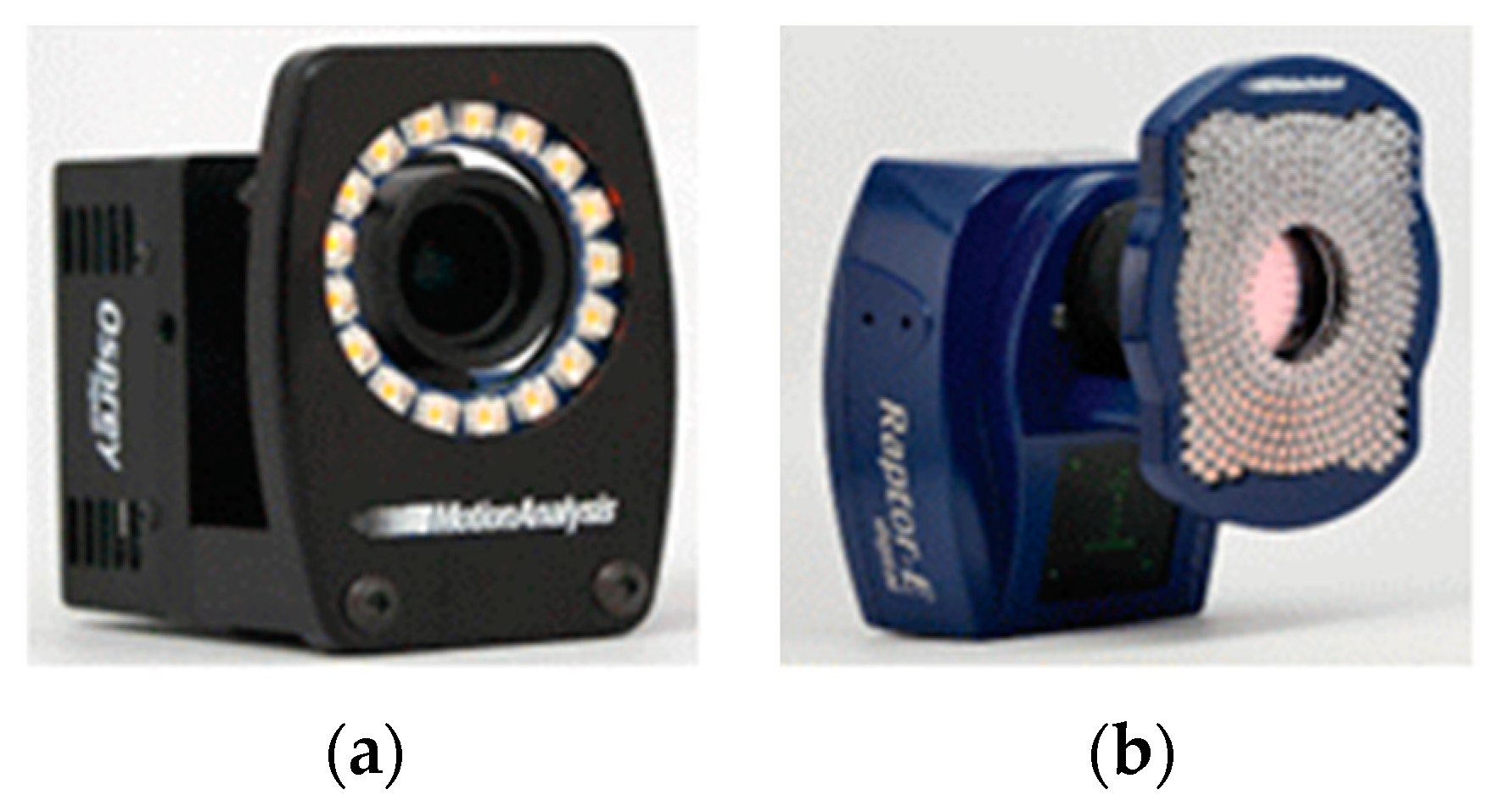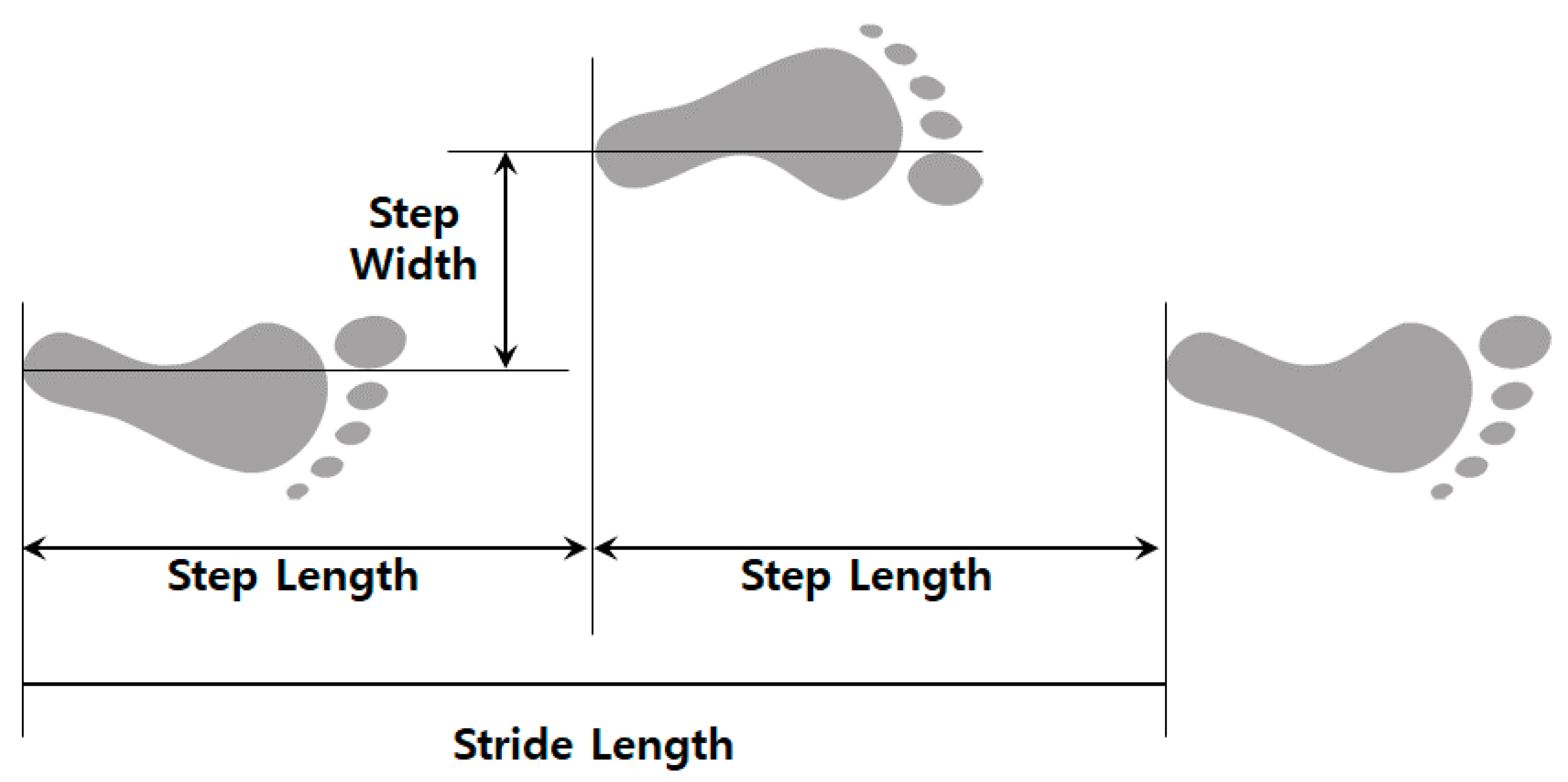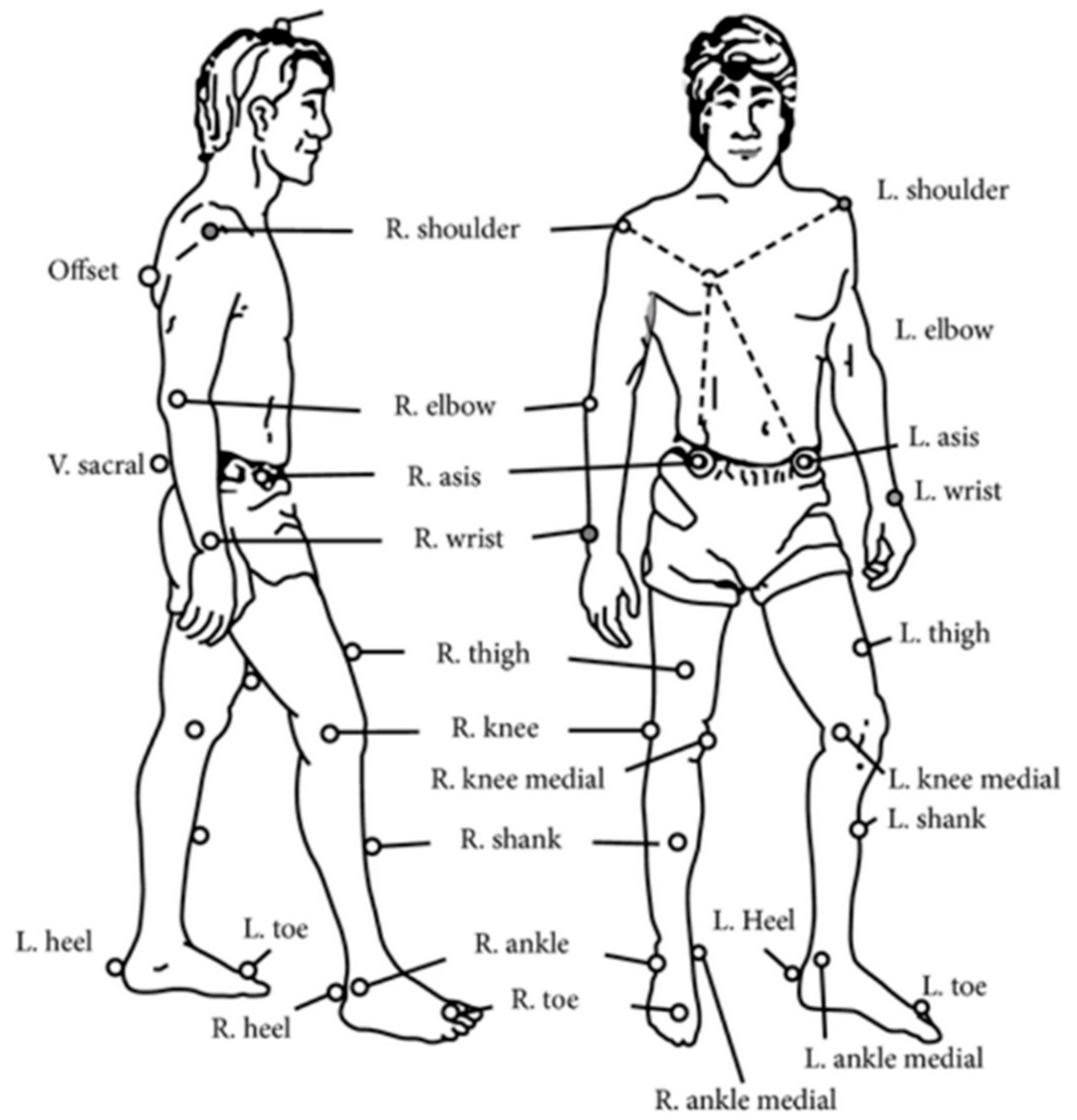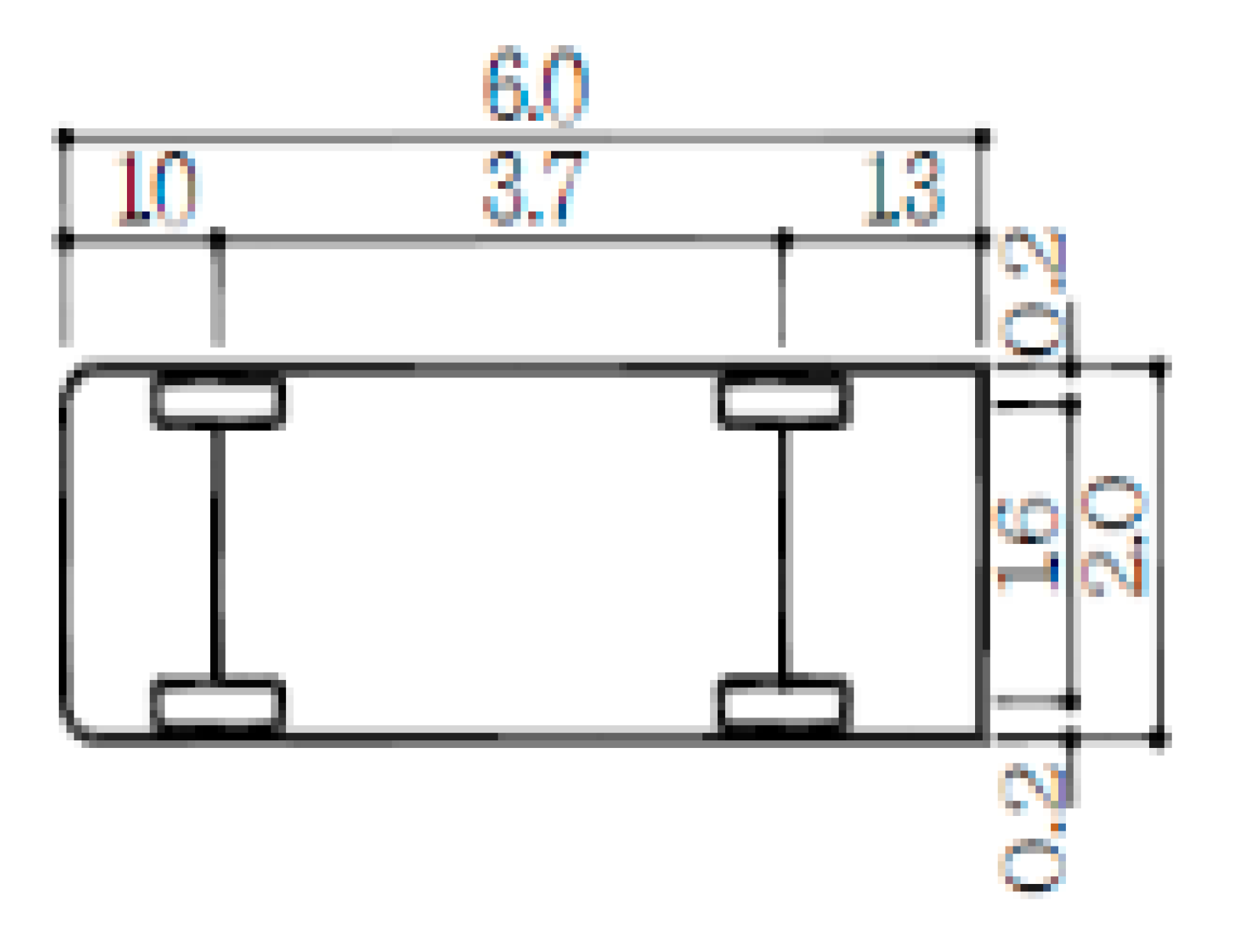A Study on the Customized Design Criteria of Pedestrians’ Specifications Using a Dimensionless Number
Abstract
1. Introduction
2. Review of Existing Studies and Necessity of the Elderly Standard Gait Model
2.1. Review of Existing Studies
2.2. Design Standard Automobile
2.3. The Necessity for a Standard Gait Model
3. Methodology
3.1. Selection of the Participants and Results
3.2. Selection of the Participants and Results
3.3. Selection of the Participants and Results
4. Measurement and Analysis of Gait Characteristics
4.1. Measurement of Gait Characteristics
4.2. Standardization of the Gait Characteristics
5. Standard Gait Model of the Elderly Using Dimensionless Numbering Coefficients in South Korea
5.1. Derivation of the Standard Gait Model of the Elderly in South Korea
5.2. Comparison of Results with the Gait Characteristics of Normal Adults
6. Conclusions and Applications
6.1. Definition of the Standard Gait Model for the Elderly in South Korea
6.2. Discussion and Conclusions
6.3. Applications
Author Contributions
Funding
Institutional Review Board Statement
Informed Consent Statement
Conflicts of Interest
References
- CNN Money, See the ‘Super-Aged’ Nations. Available online: https://money.cnn.com/interactive/news/aging-countries/index.html (accessed on 7 April 2020).
- Ministry of Land, Infrastructure and Transport (MOILIT). Actual Condition of Transportation Convenience Movement for 2017 2018, MOILIT (Korea). Available online: https://tmacs.kotsa.or.kr/web/TraffickingWeak/psd/weak_report_list.do?mid=S3106 (accessed on 7 July 2021).
- Andrews, J.D. A walk a day keep cancer away. Prevention. 2005. Available online: https://www.prevention.com/health/a20458566/a-walk-a-day-keeps-cancer-away/ (accessed on 7 July 2021).
- Jankowski, L.W.; Ferguson, R.J.; Langelier, M.; Chaniotis, L.N.; Choquette, G. Accuracy of methods for estimating O2 cost of walking in coronary patients. J. Appl. Physiol. 1972, 33, 672–673. [Google Scholar] [CrossRef]
- Choi, J.S.; Kang, D.W.; Mun, K.R.; Bang, Y.H.; Tack, G.R. Comparison of Kinematic Factors between Old and Young People during Walking on Level and Uneven Inclined Surfaces. Korean J. Sport Biomech. 2010, 20, 33–39. [Google Scholar] [CrossRef][Green Version]
- Eun, S.D.; Lee, K.K. The effect of the speed conditions on the gait pattern in treadmill walking of eldery persons. Korean J. Phys. Educ. 2004, 43, 397–404. [Google Scholar]
- Ostrosky, K.M.; VanSwearlngen, J.M.; Burdett, R.G.; Gee, Z. A comparison og gait characteristics in young and old subject. Phys. Ther. 1994, 74, 637–644. [Google Scholar] [CrossRef]
- Paroczai, R.; Bejek, Z.; Illyes, A.; Kocsis, L.; Kiss, R.M. Gait parameters of healthy, elderly people. Phys. Educ. Sport 2006, 4, 49–58. [Google Scholar]
- Winter, D.A.; Patla, A.E.; Frank, J.S.; Walt, S.E. Biomechanical walking pattern changes in th fit and healthy elderly. Phys. Ther. 1990, 70, 340–347. [Google Scholar] [CrossRef]
- Cromwell, R.L.; Newton, R.A. Relationship between balance and gait stability in health older adults. J. Aging Phys. Act. 2004, 12, 90–100. [Google Scholar] [CrossRef]
- Menz, H.B.; Lord, S.R.; Fitzpatrick, R.C. A structural equation model relating impaired sensorimotor function, fear of falling and gait patterns in older people. Gait Posture 2007, 25, 243–249. [Google Scholar] [CrossRef]
- Corazza, M.V.; D’Alessandro, D.; Di Mascio, P.; Moretti, L. Methodology and evidence from a case study in Rome to increase pedestrian safety along home-to-school routes. J. Traffic Transp. Eng. 2020, 7, 715–727. [Google Scholar] [CrossRef]
- Corazza, M.V.; Di Mascio, P.; Moretti, L. Management of sidewalk maintenance to improve walking comfort for senior citizens. WIT Trans. Built Environ. 2018, 176, 195–206. [Google Scholar] [CrossRef]
- Ministry of Land, Infrastructure and Transport (MOILIT). Explanation of the Rules on the Structural Facilities of Roads 2013; MOILIT: Sejong, Korea, 2013. [Google Scholar]
- Korean Statistical Information Service, Funeral Population Statistics. Available online: http://kosis.kr/statisticsList/statisticsListIndex.do?menuId=M_02_01_01&vwcd=MT_RTITLE&parmTabId=M_02_01_01#SelectStatsBoxDiv (accessed on 8 September 2019).
- Lee, H.S. Effect of dimensionless number and analysis of gait pattern by gender -spatiotemporal variables-. Korean J. Phys. Educ. 2014, 53, 521–531. [Google Scholar]
- Hof, A.L. Scaling gait data to body size. Gait Posture 1996, 4, 222–223. [Google Scholar] [CrossRef]
- Korea Center for Disease Control and Prevention, National Health Statistics 2018. Available online: https://knhanes.cdc.go.kr/knhanes/sub04/sub04_03.do (accessed on 7 April 2020).
- David, R.B.; Naira, C.K.; Robert, T.; Peter, M.Q. Research Article Biomechanics of Lower Limbs during Walking among Candidates for Total Knee Arthroplasty with and without Low Back Pain. BioMed Res. Int. 2015, 2015. [Google Scholar] [CrossRef]
- Roh, C.G.; Park, B.J.; Kim, J.S. Comparative research on walking characteristics of ordinary and elderly people on flat ground. Int. J. Adv. Eng. Manag. Res. 2017, 2, 1018–1025. [Google Scholar]
- Campisi, T.; Basbas, S.; Tesoriere, G.; Trouva, M.; Papas, T.; Mrak, I. How to Create Walking Friendly Cities. A Multi-Criteria Analysis of the Central Open Market Area of Rijeka. Sustainability 2020, 12, 9470. [Google Scholar] [CrossRef]
- Amprasi, V.; Politis, I.; Nikiforiadis, A.; Basbas, S. Comparing the microsimulated pedestrian level of service with the users’ perception: The case of Thessaloniki, Greece, coastal front. Transp. Res. Procedia 2020, 45, 572–579. [Google Scholar] [CrossRef]
- Rahman, M.T.; Nahiduzzaman, K. Examining the walking accessibility, willingness, and travel conditions of residents in Saudi cities. Int. J. Environ. Res. Public Health 2019, 16, 545. [Google Scholar] [CrossRef] [PubMed]




| Type of Road | Design Standard Automobile |
|---|---|
| Expressway and main arterial roads | Semi-trailer |
| Minor arterial roads and collector road | Semi-trailer or large vehicle |
| local roads | Large vehicle or passenger vehicle |
| Type | Width (m) | Height (m) | Length (m) | Axis Distance (m) | Minimum Rotational Radius | Specifications |
|---|---|---|---|---|---|---|
| Passenger vehicle | 1.7 | 2.0 | 4.7 | 2.7 | 6.0 |  |
| Small vehicle | 2.0 | 2.8 | 6.0 | 3.7 | 7.0 |  |
| Large vehicle | 2.5 | 4.0 | 13.0 | 6.5 | 12.0 |  |
| Semi-trailer | 2.5 | 4.0 | 16.7 | Front: 4.2 Back: 9.0 | 12.0 |  |
| Type of Road | Sample Size | Average Age | Participant Group | Korea Health Statistics [13] | Error (Error Rate (%)) | |||
|---|---|---|---|---|---|---|---|---|
| Height (cm) | Weight (kg) | Height (cm) | Weight (kg) | Height | Weight | |||
| male | 52 | 74.38 | 165.81 | 62.93 | 164.2 | 63.9 | 1.6 (0.98) | −1.0 (−1.53) |
| female | 60 | 75.52 | 154.69 | 56.62 | 150.2 | 55.4 | 4.5 (2.99) | 1.2 (2.21) |
| total | 112 | 74.99 | 160.27 | 60.05 | - | - | - | - |
| Type of Type | Symbol | Dimension | Dimensionless Number |
|---|---|---|---|
| Speed, velocity | LT−1 | ||
| Length, distance | l, x | L | |
| Frequency | F | T−1 | |
| Time | T | T |
| Gender | Sample Size | Average | Standard Deviation | Standard Error of Mean | |
|---|---|---|---|---|---|
| Gait speed (cm/s) | male | 40 | 100.23 | 16.97 | 2.68 |
| female | 37 | 94.84 | 15.41 | 2.53 | |
| Step length (cm) | male | 40 | 53.68 | 7.52 | 1.19 |
| female | 37 | 48.37 | 10.13 | 1.67 | |
| Stride length (cm) | male | 40 | 107.71 | 14.62 | 2.31 |
| female | 37 | 100.91 | 10.33 | 1.70 | |
| Step width (cm) | male | 40 | 12.66 | 3.01 | 0.48 |
| female | 37 | 11.42 | 2.80 | 0.46 | |
| Cadence (step/min) | male | 40 | 112.32 | 9.76 | 1.54 |
| female | 37 | 112.46 | 11.19 | 1.84 |
| Gender | Sample Size | Average | Standard Deviation | Standard Error of Mean | |
|---|---|---|---|---|---|
| Gait speed | male | 40 | 0.25 | 0.04 | 0.01 |
| female | 37 | 0.24 | 0.04 | 0.01 | |
| Step length | male | 40 | 0.32 | 0.04 | 0.01 |
| female | 37 | 0.31 | 0.07 | 0.01 | |
| Stride length | male | 40 | 0.65 | 0.09 | 0.01 |
| female | 37 | 0.65 | 0.07 | 0.01 | |
| Step width | male | 40 | 0.08 | 0.02 | 0.00 |
| female | 37 | 0.07 | 0.02 | 0.00 | |
| Cadence | male | 40 | 0.77 | 0.06 | 0.01 |
| female | 37 | 0.75 | 0.07 | 0.01 |
| Gender | Sample Size | D.N. Mean | Standardized Value | Comparison Value (Average of Measured) | |
|---|---|---|---|---|---|
| Gait speed (cm/s) | male | 40 | 0.25 | 100.29 | 100.23 |
| female | 37 | 0.24 | 92.08 | 94.84 | |
| total | 77 | 0.24 | 93.82 | - | |
| Step length (cm) | male | 40 | 0.32 | 52.54 | 53.68 |
| female | 37 | 0.31 | 46.56 | 48.37 | |
| total | 77 | 0.32 | 49.89 | - | |
| Stride length (cm) | male | 40 | 0.65 | 106.73 | 107.71 |
| female | 37 | 0.65 | 97.63 | 100.91 | |
| total | 77 | 0.65 | 101.35 | - | |
| Step width (cm) | male | 40 | 0.08 | 13.14 | 12.66 |
| female | 37 | 0.07 | 10.51 | 11.42 | |
| total | 77 | 0.07 | 10.91 | - | |
| Cadence (step/min) | male | 40 | 0.77 | 112.87 | 112.32 |
| female | 37 | 0.75 | 114.95 | 112.46 | |
| total | 77 | 0.76 | 114.32 | - |
| Gender | This Study | Previous Study [20] | |||
|---|---|---|---|---|---|
| Standardization Result | The Average | The Elderly (66+) | Normal Adults (Age 20–30) | ||
| Gait speed (cm/s) | male | 100.29 | 100.23 | 91.86 | 137.30 |
| female | 92.08 | 94.84 | |||
| total | 93.82 | - | |||
| Step length (cm) | male | 52.54 | 53.68 | 49.61 | 57.10 |
| female | 46.56 | 48.37 | |||
| total | 49.89 | - | |||
| Stride length (cm) | male | 106.73 | 107.71 | 100.87 | 129.80 |
| female | 97.63 | 100.91 | |||
| total | 101.35 | - | |||
| Step width (cm) | male | 13.14 | 12.66 | 11.78 | 12.00 |
| female | 10.51 | 11.42 | |||
| total | 10.91 | - | |||
| Cadence (step/min) | male | 112.87 | 112.32 | 109.75 | 109.50 |
| female | 114.95 | 112.46 | |||
| total | 114.32 | - | |||
| Gender | Gait Characteristic Value | Percentage of Walking Ability Compared to Adults in Their 20s [20] | |
|---|---|---|---|
| Gait speed (cm/s) | male | 100.29 | 73% |
| female | 92.08 | 67% | |
| total | 93.82 | 68% | |
| Step length (cm) | male | 52.54 | 92% |
| female | 46.56 | 82% | |
| total | 49.89 | 87% | |
| Stride length (cm) | male | 106.73 | 82% |
| female | 97.63 | 75% | |
| total | 101.35 | 78% | |
| Step width (cm) | male | 13.14 | 110% |
| female | 10.51 | 88% | |
| total | 10.91 | 91% | |
| Cadence (step/min) | male | 112.87 | 103% |
| female | 114.95 | 105% | |
| total | 114.32 | 104% |
| Define | Applicable Facilities | Contents | |
|---|---|---|---|
| Gait speed | gait speed | crossroads and other pedestrian facilities | duration of signal time |
| Step length | steps per minute | escalator, moving walk | speed of escalator or moving walk |
| Stride length | distance from the heel of the front foot to the heel of the back foot | steps | establishment of the appropriate design standards for facilities affected by steps, such as the width and height of stairs on pedestrian roads |
| Step width | distance between the two consecutive heels performed by the same foot | ||
| Cadence | distance between the center of the heel of both feet while walking |
Publisher’s Note: MDPI stays neutral with regard to jurisdictional claims in published maps and institutional affiliations. |
© 2021 by the authors. Licensee MDPI, Basel, Switzerland. This article is an open access article distributed under the terms and conditions of the Creative Commons Attribution (CC BY) license (https://creativecommons.org/licenses/by/4.0/).
Share and Cite
Roh, C.-G.; Park, B.-J. A Study on the Customized Design Criteria of Pedestrians’ Specifications Using a Dimensionless Number. Appl. Sci. 2021, 11, 10762. https://doi.org/10.3390/app112210762
Roh C-G, Park B-J. A Study on the Customized Design Criteria of Pedestrians’ Specifications Using a Dimensionless Number. Applied Sciences. 2021; 11(22):10762. https://doi.org/10.3390/app112210762
Chicago/Turabian StyleRoh, Chang-Gyun, and Bum-Jin Park. 2021. "A Study on the Customized Design Criteria of Pedestrians’ Specifications Using a Dimensionless Number" Applied Sciences 11, no. 22: 10762. https://doi.org/10.3390/app112210762
APA StyleRoh, C.-G., & Park, B.-J. (2021). A Study on the Customized Design Criteria of Pedestrians’ Specifications Using a Dimensionless Number. Applied Sciences, 11(22), 10762. https://doi.org/10.3390/app112210762






